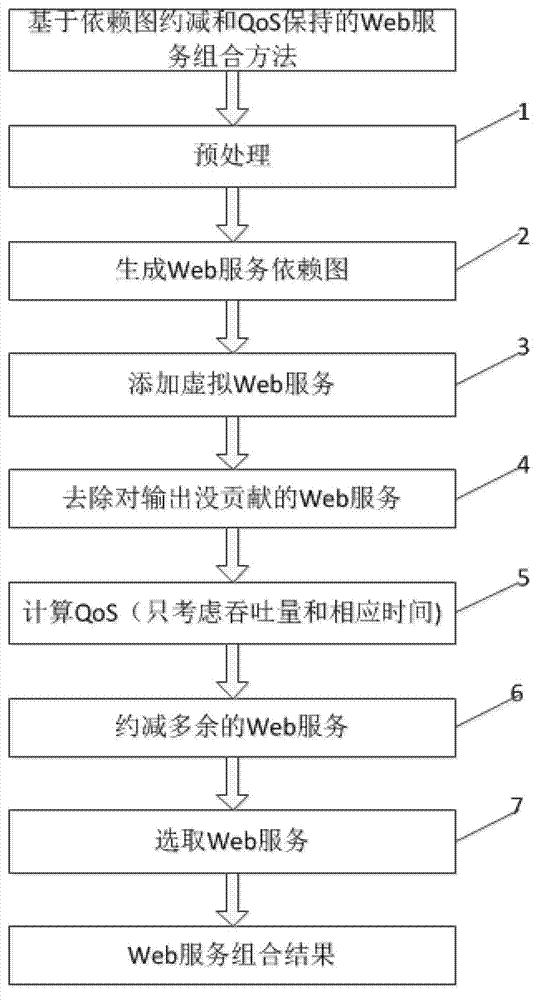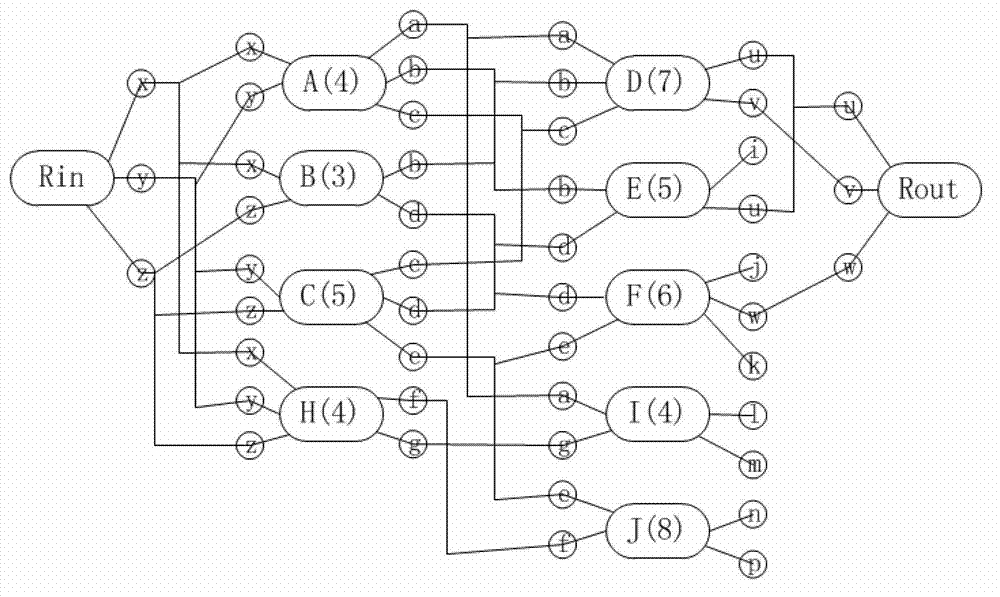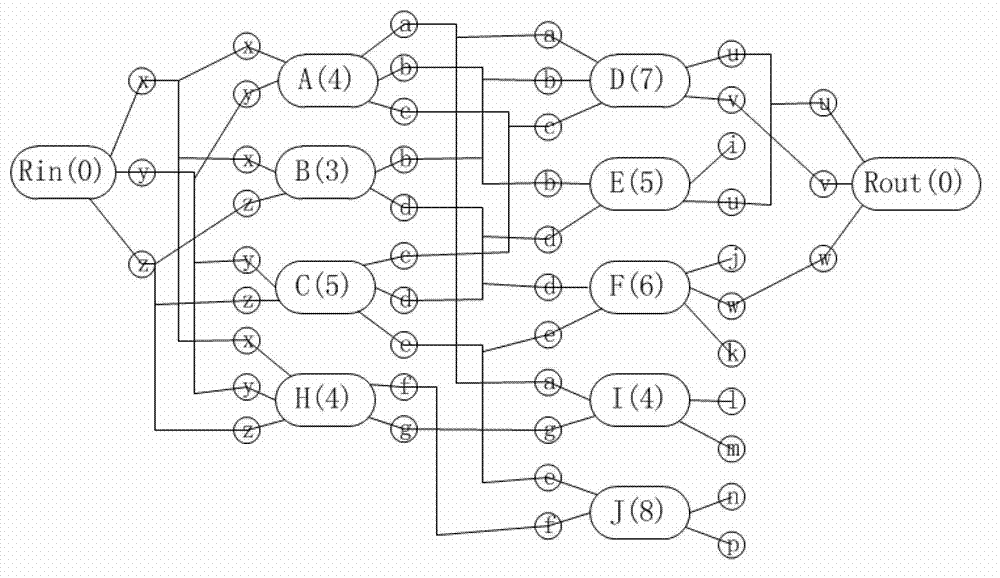A web service composition method based on dependency graph reduction and QoS preservation
A web service and dependency graph technology, applied in digital transmission systems, electrical components, transmission systems, etc., can solve problems such as multi-redundant web services
- Summary
- Abstract
- Description
- Claims
- Application Information
AI Technical Summary
Problems solved by technology
Method used
Image
Examples
Embodiment 1
[0054] For a user request (R in , R out ), where R in = {x, y, z}, R out = {u, v, w}. According to the user's request, it can be generated according to step 2 in the Web service composition method figure 2 service dependency graph.
[0055] figure 2 , the rounded rectangles A~J represent Web services, the numbers behind the rounded rectangles A~J represent QoS attribute values (response time is taken as an example in the figure), and the small circles a~z represent the input and output of Web services. For the current In terms of Web services, the front connection is the input, and the back connection is the output.
[0056] Add a virtual web service according to step 3 in the web service composition method, therefore, add the R in the figure in and R out , and the response time is 0, such as image 3 .
[0057] Remove services that do not contribute to the output according to step 4 in the Web service composition method, first remove Web services I, J, because t...
Embodiment 2
[0064] Let's take a simple travel arrangement as an example to illustrate. When the user wants the travel service to help book air tickets and hotels, the user inputs a request (R in , R out ), where R in ={departure location a, departure time b}, R out ={desired hotel location c, expected hotel time d}. For this request, the main processing steps are as follows:
[0065] Step 1: Enter request R in As the first layer, according to R inGenerate the second layer of services, such as airline A and airline B, the input of A and B is {departure location a, departure time b}, and the output is {arrival city location x, arrival time y}; the output It can be used as the input of the third layer, so the service of the third layer is generated from the second layer, such as hotel C and hotel D, the input is {city x, scheduled time y}, and the output is {hotel address c, check-in time d}; Since the third layer has obtained the user's desired R out , put R out Finish as the fourth...
PUM
 Login to View More
Login to View More Abstract
Description
Claims
Application Information
 Login to View More
Login to View More - R&D
- Intellectual Property
- Life Sciences
- Materials
- Tech Scout
- Unparalleled Data Quality
- Higher Quality Content
- 60% Fewer Hallucinations
Browse by: Latest US Patents, China's latest patents, Technical Efficacy Thesaurus, Application Domain, Technology Topic, Popular Technical Reports.
© 2025 PatSnap. All rights reserved.Legal|Privacy policy|Modern Slavery Act Transparency Statement|Sitemap|About US| Contact US: help@patsnap.com



